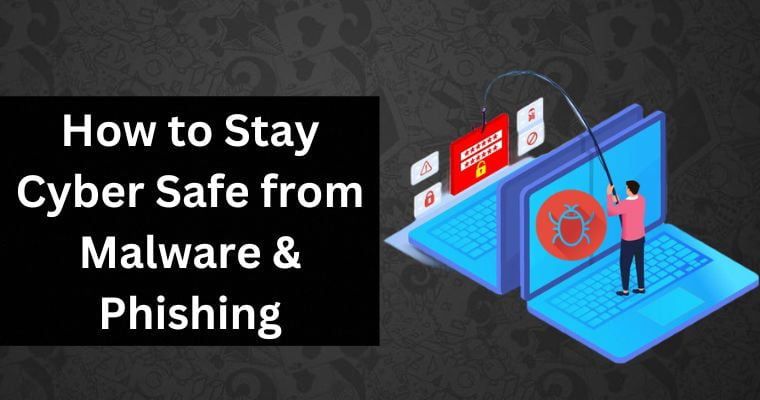In the modern world, we’re currently living in there’s a huge reliance on technology and the internet. Ever since these two modern phenomena combined, society hasn’t looked back because of the ease and convenience that it has brought to our daily lives.
From laptops to tablets, and even smartphones that fit into your pocket, technology has come a long way in such a short space of time.
You can now find movies or TV shows on demand through platforms like Netflix, chat with friends and family thousands of miles away thanks to social media, and you can even work remotely without a set office — something that is becoming ever more popular these days.
However, with this heavy reliance on technology and the internet, it’s important to keep in mind that there are some serious threats that we face every day too.
Cybercriminals are always looking to exploit vulnerabilities in the devices of innocent victims. You need to make sure that you understand the threats that your devices face, so keep reading to find out!
The Dangers of Malware
Malware, short for malicious software, refers to any software that is designed to cause harm to a device — it’s one of the most serious threats that your device faces online.
Malware can take many forms, but three of the most common and dangerous types of malware include viruses, spyware, and ransomware.
Viruses are one of the most well-known types of malware — you’ve likely experienced them in the past. There are several types of viruses, and each one has a unique goal.
Once a virus has infected a device or network, it can cause a range of problems, including deleting files, stealing personal information, or using the infected device to launch attacks on other systems.
Spyware is another form of malware that is designed to collect personal information without the user’s knowledge or consent. Spyware can track everything from keystrokes and online activities to personal data like credit card numbers and passwords.
Once spyware has collected this information, it can be used for a range of malicious purposes, including identity theft and or sale on the dark web.
Ransomware is the most dangerous type of malware. Its goal is to encrypt a victim’s files and it requires a ransom payment in exchange for the encryption to be removed.
Ransomware attacks have become increasingly common in recent years and can cause massive amounts of damage to both individuals and businesses.
It’s important to understand the dangers of malware, but it’s just as critical to understanding how malware can make its way onto your device. Let’s take a closer look at the most common method that hackers use — phishing.
The Threat of Phishing
Phishing has become a common and dangerous tactic in the world of cybercrime. Phishing is a type of cyberattack that involves tricking victims into providing sensitive information, such as passwords or credit card details.
Phishing is also often used to install malware on the victim’s devices. The main goal here is to get the victim to click on an illegitimate link.
One of the ways phishing has developed is through the use of social engineering. Social engineering involves manipulating individuals by posing as a person or company that they might know and trust.
Cybercriminals often use social engineering tactics to create a sense of urgency or fear, making their victims more likely to fall for their tricks.
Netflix is a prime example of how cybercriminals use social engineering to make their phishing attacks more convincing.
In recent years, there have been numerous reports of phishing emails that appear to be from Netflix, asking users to update their billing information or provide personal details.
The emails are often very convincing, using the Netflix logo and branding, making it difficult for users to tell the difference between a legitimate and fake email.
Once a user clicks on the link provided in the email, they are directed to a fake website that looks like the real Netflix login page.
The fake website is designed to steal the user’s login credentials and other personal information or install malware on their device without their knowledge.
To protect against phishing attacks, it’s important to educate yourself about how to spot phishing attacks.
You need to be cautious when receiving unsolicited emails or messages as these are the primary methods that hackers use to launch their attacks. Never click on links or download attachments from unknown sources.
Keeping Your Devices Secure
You need to make sure to keep your devices secure in our modern world. With the threat of malware and phishing attacks becoming more and more prevalent, it’s becoming increasingly difficult to stay cyber-safe.
But, there are several steps you can take to enhance the security of your devices and reduce the risk of malware and phishing attacks. The most important step is to use premium cybersecurity tools at all times.
The most important cybersecurity tool to install on your device is antivirus software. Antivirus software can help detect and remove malware before it causes any damage to your device.
This is all thanks to the library of known malware codes and apps that have been built into the library of antivirus software.
It is essential to use a reputable antivirus program and keep its library updated with the latest viruses to ensure that it can detect and remove the newest threats.
If you’re using premium antivirus software, you can be sure that your cybersecurity tool will always be up-to-date and keep your devices secure.
Another essential step is to practice safe browsing habits and avoid phishing attacks.
Phishing attacks are becoming increasingly sophisticated and can be challenging to detect, but you can reduce the risk by being cautious when opening emails, clicking on links or downloading attachments from unknown sources.
If you receive an email from a familiar company or service, such as Netflix or a bank, double-check the sender’s email address and verify the message’s legitimacy before clicking on any links or providing any personal information.



